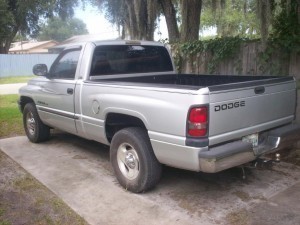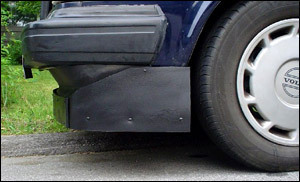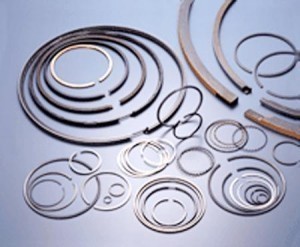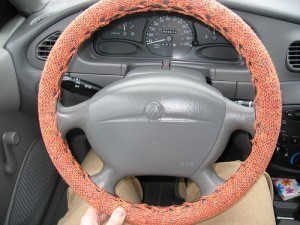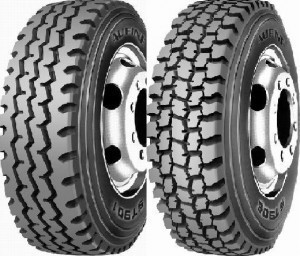Tire Size Chart
Reading tire size charts can be confusing at first with all the 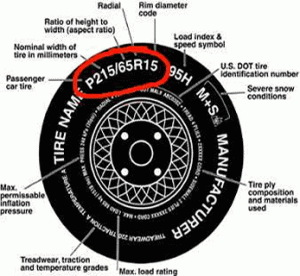 numbers and letters. But the following example will take the mystery out of those figures.
numbers and letters. But the following example will take the mystery out of those figures.
The First Letter
Examine your car tire’s sidewalls. You will see a figure like P235/75R15 85H. The first letter, P, stands for passenger car. If the vehicle is a light truck, the letters would be LT.
Tread Width
The next three numbers are the tread width or section width. These are expressed in millimeters. In this example, the tires have a tread width of 235 mm.
The Aspect Ratio
Next to the slash (/) is the aspect ratio. People who read tire size charts often have difficulty understanding what this means. In basic terms, this is the tire height percentage over the rim compared to the width.
Reading tire size charts can be confusing at first with all the numbers and letters. But the following example will take the mystery out of those figures.
The First Letter
Examine your car tire’s sidewalls. You will see a figure like P235/75R15 85H. The first letter, P, stands for passenger car. If the vehicle is a light truck, the letters would be LT.
Tread Width
The next three numbers are the tread width or section width. These are expressed in millimeters. In this example, the tires have a tread width of 235 mm.
The Aspect Ratio
Next to the slash (/) is the aspect ratio. People who read tire size charts often have difficulty understanding what this means. In basic terms, this is the tire height percentage over the rim compared to the width.
In this example, the car tread width is 235 mm. In this case, the height over the rim is 75% of that figure. That is equal to 176.25 mm. The tire aspect ratios differ. A higher aspect ratio does not handle as well as one with a low aspect ratio. However, the ride will be smoother.
Radial Ply
The letter R means the tire is radial ply. This is almost always the case with passenger cars. If you decide to buy a bias ply, the letter would be D. A belted bias will have the letter B. In most car tire size charts, the letter will be R.
The Diameter
The numbers after the letter R is the rim diameter expressed in inches. This is a figure that must correspond with the ones that originally came with your tires.
You can only change this if the wheels are replaced. This measurement is very important. A 16 inch tire is too big for a 15 inch rim. The 14 inch tire is too small. This figure has to be exact.
The Load Rating
The next two numbers are the tire load rating. The higher the number, the heavier load it will be able to carry. The load rating is closely associated with the car weight.
It is also assessed along with the estimate weight of the passengers or cargo. For this reason, you must never buy tires with load ratings lower than the one your car had.
Note: some vehicles like light trucks do not specify the load rating. The speed rating may not be indicated either.
Speed Rating
The last letter is indicative of the speed rating. It also denotes the max speed at which the tire can function. The letter H indicates the tire speed is 130 mph. A letter I means it can go a maximum of 118 mph while the S means it can go 112 mph. Tires with a V or Z are very high speed (over 149 mph).
Learning how to read tire size charts is not that difficult once you understand what the numbers and letters represent. As a driver, it will be to your advantage to know what these figures are all about.
In this example, the car tread width is 235 mm. In this case, the height over the rim is 75% of that figure. That is equal to 176.25 mm. The tire aspect ratios differ. A higher aspect ratio does not handle as well as one with a low aspect ratio. However, the ride will be smoother.
Radial Ply
The letter R means the tire is radial ply. This is almost always the case with passenger cars. If you decide to buy a bias ply, the letter would be D. A belted bias will have the letter B. In most car tire size charts, the letter will be R.
The Diameter
The numbers after the letter R is the rim diameter expressed in inches. This is a figure that must correspond with the ones that originally came with your tires.
You can only change this if the wheels are replaced. This measurement is very important. A 16 inch tire is too big for a 15 inch rim. The 14 inch tire is too small. This figure has to be exact.
The Load Rating
The next two numbers are the tire load rating. The higher the number, the heavier load it will be able to carry. The load rating is closely associated with the car weight.
It is also assessed along with the estimate weight of the passengers or cargo. For this reason, you must never buy tires with load ratings lower than the one your car had.
Note: some vehicles like light trucks do not specify the load rating. The speed rating may not be indicated either.
Speed Rating
The last letter is indicative of the speed rating. It also denotes the max speed at which the tire can function. The letter H indicates the tire speed is 130 mph. A letter I means it can go a maximum of 118 mph while the S means it can go 112 mph. Tires with a V or Z are very high speed (over 149 mph).
Learning how to read tire size charts is not that difficult once you understand what the numbers and letters represent. As a driver, it will be to your advantage to know what these figures are all about.
